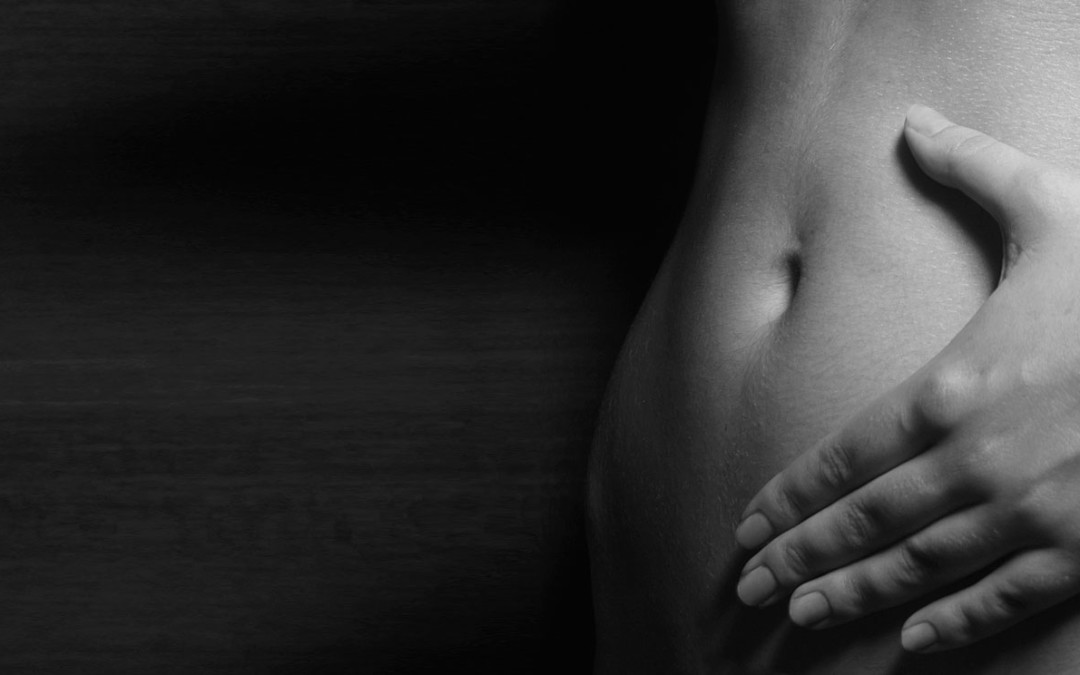
by Tanya Keam | Mar 3, 2015 | Acupuncture, Buderim, Chinese medicine, Client information, DIY Wellness Tips, Emotions, Fertility, fertility acupuncture, Gynaecological, Hormones, Menstrual cycle, Mental health, Nourishing, pregnancy, Stress, Sunshine coast, Womens health
What does BBT mean?
BBT stands for basal body temperature. It is your lowest body temperature in a 24-hour period.
Why do you map your BBT?
I asked clients to map their BBT if their treatment involves regulating their menstrual cycle, managing hormonal imbalance and for fertility. It is such a useful tool to understand many aspects of them as an individual woman and allows me to pin point specific imbalances. Most unexplained infertility cases are actually not infertile at all, but are actually subfertile. Through looking at charts as well as lab results and symptoms, the cause can often be found. Charting can be an excellent tool for diagnostics, especially in cases of unexplained infertility and is also a great way for woman to be self aware and gain understanding for what is going on in their bodies.
How to record your BBT
Take your temperature (with a thermometer orally or vaginally) upon waking and record it on a simple chart. This means before you get up and do your morning rituals. Your temperature can slightly increase once you are up and about getting breakfast ready, chasing kids around, exercise etc. Try to take your temperature at the same time each day or your reading may not be accurate. If the time varies, please make a note of this, as well as any illness or life changes (cold/flu, stomach bug, migraine, unsettled sleep, a sudden increase in stress etc). I always suggest to keep your thermometer by your bedside table so its always handy.

Your menstrual cycle
A women’s menstrual cycle is approximately 28-32 days. Day 1 of your period is day 1 of your cycle.
The first phase (follicular phase) is the phase in which the follicles develop. Typically we see that this level is low and steady, where Estrogen is the dominant hormone during this phase.
Around mid cycle (day 14), you may or may not see a slight dip in temperature, followed by a strong rise in temperature of approximately 0.3- 1 degree. The day before the temperature rises is the day you ovulate.
Ovulation is when you are most fertile.
The second phase (luteal phase) is the phase in which the egg travels down the fallopian tube and the process of fertilisation or implantation may occur. Typically we like to see that this phase is high and steady. Progesterone is the hormone which keeps the luteal phase at a high temperature.
What do your readings mean?
When the follicular phase is too long, too short, too high or too low in temperature, or your cycle is irregular (such as 23 days long, then 40 days long, then 50 days long, then 22 days long) this can mean there are hormonal imbalances.
What causes hormonal imbalances?
Thyroid conditions – The thyroid gland is located at the front of you neck. Thyroid hormones travel from the thyroid gland through the blood to all parts of the body, where they do their work in affecting your metabolism rate, which means how fast or slow your brain, heart, muscles, liver, and other parts of your body work. The thyroid can be tested through pathology tests to check the levels of specific hormones.
Through BBT charting, we tend to see an abnormally low or high temperature reading in the follicular phase when the thyroid is under or overactive.
Emotional stress and inconsistent sleep patterns – Often shows up as an up and down movement of temperature from day to day.
In the case of stress, we tend to see instability of temperature, and in the case of primary hormonal imbalance we tend to see either an increase or decrease in length of this phase.
Poor ovarian reserve (also known as impaired ovarian reserve, premature ovarian aging or declining ovarian reserve) and poor egg quality – Can be due to a number of reasons.
Polycystic ovarian syndrome (PCOS) – is a complex condition in which a woman’s ovaries are generally bigger than average. Polycystic means the ovaries have many cysts or follicles that rarely grow to maturity or produce eggs. Symptoms can include excessive hair growth, moodiness, weight gain, irregular cycles, no periods or a long follicular phase, acne and painful periods.
Diagnosis of PCOS is likely to involve your medical history, an examination which may include an abdominal ultrasound, and tests to measure the hormone levels in your blood.
Through BBT charting we can see if your follicular phase is longer than usual, which for PCOS can indicate insulin resistance or excess androgens (male hormones).
Insufficient nutritional elements – Poor diet and lack of nutrients can be another cause of hormonal imbalance. Diabetes can also be a culprit.
Progesterone deficiency – Mid cycle, we see a spike in temperature, which is related to secretion of the hormone progesterone and is the result of ovulation. The temperature will rise the day after ovulation occurs. If you don’t see this spike, you may not have ovulated. f there is a downward decline occurring earlier than 12 days after ovulating, this suggests that there may not be sufficient progesterone production to maintain pregnancy. Implantation may occur 7 – 12 days after ovulation, in which case you may see an implantation dip on your chart. This is a normal and healthy finding, but like implantation bleeding it is also not necessary for a healthy pregnancy.
Through BBT charting we can see if the temperature reading in the second phase of the cycle (luteal phase) does not remain steady, your progesterone secretion may not be enough to maintain implantation and pregnancy. If the length of this phase is either too long or too short, this can indicate problems with the health of corpus luteum, or nutritional deficiencies (the corpus luteum is the outer part of the follicle left after you have ovulated, which continues to secrete the hormone progesterone allowing you to maintain pregnancy).
Perimenopause and menopause – A woman’s ovaries gradually decrease production of estrogen and progesterone with age.
There are many other more complex breakdowns of the variations in basal body temperature charting as well.
What is helpful to balance hormones?
In Chinese medicine we use diagnostics, acupuncture, herbal medicine, heat therapy, nutrition and lifestyle care to treat hormonal imbalances and other gynaecological factors. Depending on which scenario (above) you are, will determine your treatment.
Treatment plans for preparing to conceive specifically, are designed to optimise ovarian function, sperm and egg vitality, regulate the immune system, reduce stress, promote restful sleep, promote digestion, and weight loss if necessary. Treating gynaecological conditions have also proven success in regulating menstrual cycles and improving fertility.
Chinese medicine can work safely in accordance with IVF to improve the outcome. Acupuncture protocols will help to improve blood flow and drug delivery to the ovaries and uterus during the stimulation phase, improve rates of implantation of embryos and reduce stress and side effects.
IVF is the process of fertilising eggs with sperm outside of the human body. Once the eggs are fertilised, the resulting embryos are placed in the woman’s uterus in the hope that a successful pregnancy will follow.
Information derived from Lyttleton, Jane (2013) Treatment of Infertility with Chinese Medicine, Second edition.

What do the treatments involve?
Depending on why your hormones are imbalanced or other gynaecological factors, will determine the treatment plan and outcome. As a practitioner I advise regular treatments such as weekly, in accordance with health changes you need to do at home, such as nutritional changes or herbal remedies to assist the treatment outcome. The male partners are also advised to receive treatment.
I advise all women seeking treatment to start BBT mapping their cycles and fill in a symptom chart which includes daily symptoms relating to; energy levels, PMS, menstrual cramping, vaginal discharge and mood changes, to name a few. The symptom chart allows me to see what is happening in between your acupuncture treatments so that I can treat you accordingly.
Changes to your plan will be made for IVF protocols and specific gynaecological conditions. Acupuncture can be used to manage anxiety and any side effects you might experience such as fatigue, moodiness, abdomen swelling and discomfort that can be experienced with the IVF process.
Please see the FAQ’s page and What to Expect page for more information.
Other factors to consider regarding your fertility and gynaecological health
Environmental toxins – clean up your environment at work and at home – exposure from various sources such as BPA in plastics, pesticides in food.
Do you exercise? Adopting the right amount of exercise is important, however exercising too strenuously releases the stress hormone Cortisol which can interfere with reproductive organs. Opt for gentle exercises such as swimming, yoga, tai chi and pilates.
Sanitary products with bleach and other chemicals that are being inserted into the body – organic tampons and pads are now easily found in major supermarkets and health food stores and their quality and absorpancy is nothing less. Menstrual cups found here > https://www.menstrualcupsaustraliaonline.com.au/what-is-a-menstrual-cup/ are also becoming more popular as they are sanitary, medical grade silicone, environmentally friendly and save you money (they cost $40-60AU and will last you 10 years!). All you have to do is wash them out and boil them in hot water at the end of your period to kill any bacteria. Many women experience less period pain when using a cup !
Look after your abdominal area – A poor diet can cause your digestive system to malfunction. Unhealthy foods collect in the abdominal environment, blocking the blood circulation needed to nourish the area. Pay attention to foods that cause bloating, fatigue, wind, abdominal cramps, irregular bowel motions or sensitivity. Acupuncture and herbs can stimulate circulation and improve the function of the digestive system.
Start with a healthy body weight – Women who are either underweight or overweight can ovulate less regularly, and men in the same situation will produce fewer and less healthy sperm.
Are you stressed – Physically, mentally or emotionally? Stress is a huge factor for fertility, especially if you and your partner have been trying for a baby for a long time. However other stressors in life such as work or relationships also play a part. Find time to resolve stress and put relaxation time in your diary! Talking to a friend or professional may also be helpful to get things of your chest.
Be aware of your immune system – If you are getting every cold/flu going around, having upset digestion from a gut bug or generally feeling unwell then you are not in optimal health to conceive.
For women – stay warm. In Chinese medicine, we place a strong emphasis on keeping warm to encourage blood flow. Keeping your ‘midriff’ and lower back warm is said to encourage a ‘warm womb’. Swimming on your period is also not recommended, as your cervix is open when menstruating, the cold temperature of the water enters a warm body, causing the ‘cold’ to lodge inside. Remember its all about the warmth and circulation! However for men its important that their testicles are kept cool as heat can affect sperm quality.
Are you sleeping well throughout the night? Even just one week without well-rested sleep plays havoc with your hormones. Opt for the same bed time every night such as no later than 10pm. Avoiding stimulants such as caffeine after 3pm is important so that you aren’t kept awake.
Have you been on the pill for a long time where your hormones have been told what to do for years? Your body will need time to adjust to its own cycle. Acupuncture can regulate the menstrual cycle and manage symptoms such as fatigue, menstrual headaches, tender breasts and mood swings.
Do you have any nutritional deficiencies? For example, your uterus needs a certain amount of iron for the lining of the uterus to thicken for conception, if your iron levels are low then conception decreases.
Do you have a family history of any gynaecological conditions? Ask the women in your family about their fertile health.
Be aware of infection – Previous STD’s and noting any thrush or constant urinary tract infections could make conception more difficult.
Having a GP check up – blood tests, ultrasounds and infection tests are all helpful to rule out anything first.
Lastly, do you have time to welcome a baby into your life? Are you working so many hours already, trying to make ends meet financially or too many other commitments for a baby to come into your life?
Take the time to cover all bases listed above so your health is the priority 🙂
Take care of you, see you in the clinic,
TK xx
Learn more > http://www.tanyakeamwellness.com

by Tanya Keam | Mar 2, 2015 | Acupuncture, Autumn, Buderim, Chinese medicine, Client information, Daily Rituals, DIY Wellness Tips, Immune Support, Nourishing, Nutrition, Seasonal living, Sunshine coast
Autumn
Autumn is the season that follows the long and hot days of summer, where the days become shorter, the nights a little cooler, presenting us with earthy coloured falling leaves to prepare for the coming winter. With the change in temperature, especially the summer humidity that we experience in Queensland Australia, the air signals us to start putting away the summer frocks and get out warmer jackets and scarfs. We also begin to harvest and gather brightly coloured foods of the new season, such as pumpkin and squash.
Chinese medicine is very much focussed around the seasons of the year. We go from the relaxed and carefree attitudes of Summer to the more serious and introspective energies of Autumn. In Autumn we move from the external, expansive nature of Summer to the internal, contracting nature of Autumn. It is a good idea to finish up projects you’ve started in spring and summer and frolic in the rewards, a bit like the planting of seedlings in the veggie patch that have been harvested.
In Chinese medicine, Autumn is associated with the lungs and colon. The energy of the lungs are colon are about “letting go”, in all aspects of our life so that we can make room for new experiences that will help us to learn and grow.

Imbalances that can occur during Autumn can include :
Dry skin, lips and throat
Stiff upper back and neck
Allergies, allergic rhinitis and sinusitis
Weak immunity
Sneezing and running rose
Lack of vitality
Itching
Dry or phlegmy cough
Constipation
Asthma
Skin conditions flare up, such as eczema
Sitting with sadness/grief for longer
Tips for staying well during Autumn :
Practice breathing exercises
Let go of negativity in your life
Walk outside
Reorganise, clean and declutter
Recognise sadness/grief
Brush your skin with a dry soft brush
Acupuncture and cupping are helpful to prevent illness (colds and flu that are common in autumn) and to assist your body to recover quickly
Wear a scarf and jacket to protect your neck and back from the wind
Nutrition is a large part of Chinese medicine – to eat seasonally.
Foods that are beneficial in Autumn:
Garlic, Sweet potato, Ginger, Onion, Cabbage, Rice, Cinnamon, Cardamon, Leek, Miso, Navy beans, Almonds, Asparagus, Walnuts, Pear, Olives, Cauliflower, Yoghurt, Apples, Celery, Broccoli, Apricot, Sourdough, Sauerkraut, Cloves, Squash, Pumpkin
The best way to stay well according to Chinese medicine, is to learn about the nature of each season and to live in harmony with its spirit. If we are living in harmony with the world around us, the Autumn around us, we see that nature is a powerful system of slowing down and contracting, preparing to rest, so its good for us to mimic this. Sleeping a little longer, eating less cold foods and instead more warming and nourishing foods, like stews and soups, and paying extra attention to our internal lives. The time of the lungs and colon is about self worth, to give ourselves some extra attention and self love.

Perhaps that yoga class you’ve been meaning to get to for months can now fit into your schedule.
To breathe
To nurture
To let go.
Take care of you, see you in the clinic,
TK xx
Learn more > http://www.tanyakeamwellness.com
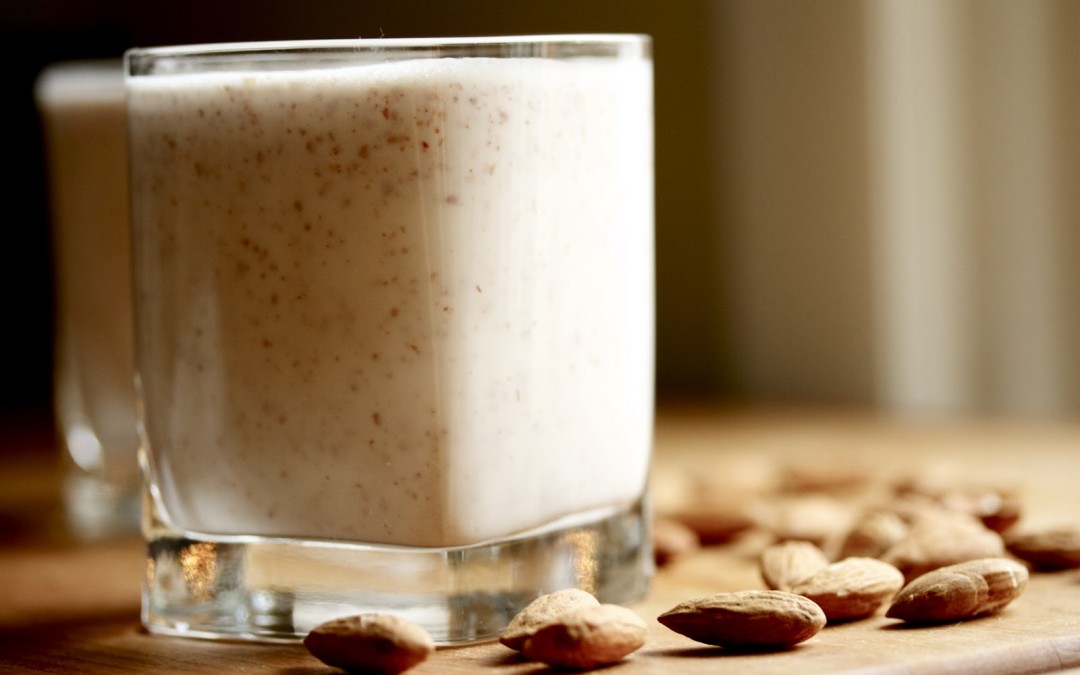
by Tanya Keam | Feb 13, 2015 | Alkaline, Chinese medicine, Client information, Dairy alternatives, Dairy free, DIY Wellness Tips, Homemade, Nourishing, Nutrition, Sunshine coast, Vegan, Vegetarian, Wellness
Why don’t people consume dairy?
1. Some people are lactose intolerant which means their body has an inability to digest lactose, a sugar found in milk and to a lesser extent dairy products (cheese, yoghurt, butter etc), causing side effects. In most cases, symptoms include abdominal bloating and cramps, flatulence, diarrhoea, nausea, rumbling stomach or vomiting.
2. Allergic reactions to dairy
3. Dairy is considered a food that can cause inflammation in the body
4. Ethical reasons behind the production of dairy products
5. Dairy causes digestive discomfort, bloating or loose stools even though they aren’t lactose intolerant
Dairy alternatives are very popular these days and can include:
Almond Milk
Almond milk is a great substitute for milk in every aspect of cooking and baking as well as over cereal, in smoothies or in your morning coffee/cuppa. Creamy, usually just a little sweet, high in vitamin E and other essential nutrients, and more alkaline than other nuts. Almond milk is almost always found in with the other non-refrigerated boxed beverages.
You can also use other nuts such as cashews, brazil or hazelnuts as a nut milk.
These dairy-free milk alternatives are usually not soy-free however, as they almost always contain soy lecithin. You can avoid soy by making your own milk at home!
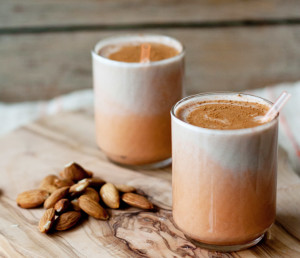
Half a cup of almonds (or other nuts) – soaked in filtered water overnight in the fridge
3 cups of filtered water
Pinch of salt
2 dates
1/4 teaspoon vanilla essence or vanilla bean
Blend on high for 1 minute in a good blender
Strain the liquid through a nut bag or clean mesh cloth
Refrigerate and consume within 3 days
You can make smaller batches if you know you’re not going to get through it all
Coconut Milk
Prepared from fresh coconut meat (flesh), coconut milk is a great option for richer dairy-free dishes. Although it is high in fat and saturated fat (their good fats!), coconut milk is a delicious way to add creaminess to any number of dairy-free dishes. I wouldn’t recommend in your tea or coffee but it goes great in curries, puddings, dairy-free whipped cream or desserts and with your cereal or granola.
Coconut meat can also be made into a yoghurt and flavoured with fruit. The yoghurt is very thick and creamy.
Rice Milk
Rice milk is generally thinner in consistency than nut milks or soy milk, and it has a lighter, sweeter flavour that is perfect for using with cereal or in coffee/tea. While rice milk works well in baking recipes, for using in dairy-free sauce recipes it generally requires some sort of binding or stabilising agent such as agar flakes, eggs, flour or anthem gum. I would recommend to use rice milk in coffee, tea, smoothies or own its own.
Soy milk
Soy milk is made from the soy bean and are a complete protein source and a dietary staple in many cultures. It is one of the richest of non-dairy milk alternatives next to coconut milk, contributing density through fat, fiber and protein while still free of cholesterol and saturated fats. Excellent for baking, cooking, in a glass or over cereal, soy milk is an easy way to add protein and dimension to your recipes.
Soy contains phytoestrogens called isoflavones that may mimic the activity of the hormone estrogen in your body. I would recommend avoiding soy if you have a tendency toward high oestrogen and if you do consume soy, go for non-genetically modified (non-GMO) and certified organic. Perhaps rice or nut milk would suit you better, or just mix it up.
Take care of you, see you in the clinic,
TK xx
Learn more > http://www.tanyakeamwellness.com

by Tanya Keam | Feb 12, 2015 | Acidic, Alkaline, Chinese medicine, Client information, Cultures, Daily Rituals, DIY Wellness Tips, Fermented, Food, Gut flora, Immune Support, Kombucha, Nourishing, Nutrition, Parasites, Probiotic drink, Sunshine coast
What is gut flora?
Gut flora (microbiota) is the name given today to the microbe population living in our intestines. It contains tens of trillions of micro-organisms, including at least 1000 different species of known bacteria with more than 3 million genes (150 times more than human genes). Microbiota can, in total, weigh up to 2 kg. One third of our gut microbiota is common to most people, while two thirds are specific to each one of us. In other words, the microbiota in your intestine is like an individual identity card.

Why is it important?
While each of us has a unique microbiota, it always fulfils the same physiological functions and they have a direct impact on our health:
•It helps the body to digest certain foods that the stomach and small intestine have not been able to digest.
•It helps with the production of some vitamins (B and K).
•It helps us combat aggressions from other microorganisms, maintaining the wholeness of the intestinal mucosa.
•It plays an important role in the immune system, performing a barrier effect.
•A healthy and balanced gut microbiota is key to ensuring proper digestive functioning.
What does pH in the body mean?
pH stands for power of hydrogen, which is a measurement of the hydrogen ion concentration in the body. The total pH scale ranges from 1 to 14, with 7 considered to be neutral. A pH less than 7 is said to be acidic and solutions with a pH greater than 7 are basic or alkaline.
How does this affect our health?
When we eat acid-forming foods, our body works to bring our blood pH back into balance by releasing alkaline-rich minerals into our bloodstream (e.g. calcium, phosphorus and magnesium).
If we are not eating enough alkaline-forming foods, then our body has to pull these minerals from our bones, teeth and organs. This can compromise our immune system, cause fatigue and make us vulnerable to viruses and disease.
How do we keep the pH balanced to prevent illness and disease?
Maintaining an approximate 80% alkalinity and 20% acidity diet is the best way to maintain wellness.
Acidic foods (alcohol, refined sugars, coffee, fast foods, chocolate, red meat, fish, dairy) are foods that are associated with disease. A highly acidic diet creates a favourable environment for yeast, fungus, abnormal cells and even parasites to multiply and grow.
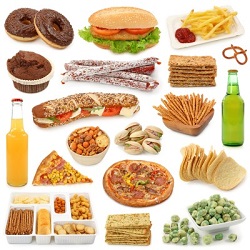
Alkaline foods (most fruit and vegetables such as leafy greens, lemons, citrus fruits, berries, broccoli, cabbage, nuts, herbal tea) are foods which maintain and prevent disease from occurring in the body.
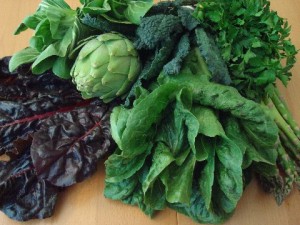
What are intestinal parasites?
Even the word “parasite” sounds terrible. Like a villain, living off the goodness within you! Eeek!
Parasites infect the gastro-intestinal tract of humans and other animals. They can live throughout the body, but most prefer the intestinal wall. Means of exposure include: ingestion of undercooked meat, drinking infected water, and skin absorption.
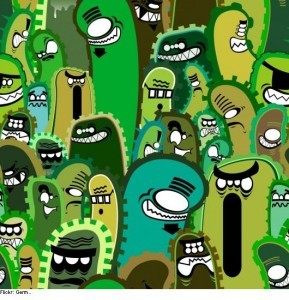
What’s the plan to get them out of you ASAP!?
Antibiotics are advised for intestinal parasites from your GP. However there are other options and/or in combination:
Firstly, the 4 R’s:
1. Remove the micro-organisms that shouldn’t be there, as well as toxic foods (acidic) you shouldn’t be eating
2. Replace/restore the nutrients, bacteria, intestinal flora (pre and probiotics)
3. Repair the cell on every level
4. Relaxation! – Stress, anxiety etc
Remove – Many qualified health practitioners can sort a digestive cleanse for you, using anti-microbials which first rid the body of the unwanted organisms. This can be a long haul as the organism will continue to reproduce.
Including colonics – a colon enema cleanse which literally involves flushing the colon with water and herbs.
Removing foods that have inflammatory properties will aid the whole process – wheat, gluten, soy, dairy, sugar, alcohol, fructose.
Replace/restore – In addition to the above digestive cleanse, probiotics are taken at the same time to restore the yummy gut flora. Probiotics can be taken in tablet form, yoghurt, kombucha (a fermented herbal tea – see my how to make kombucha post) or fermented vegetables. I would recommend all of the above, except for dairy during the cleanse.
Maintaining a diet that is 80% alkaline will create an unhappy environment for the parasites as they enjoy the acidity.
Repair – Additional supplements and herbs can be prescribed for you which will improve your overall health, aside from probiotics etc. Such as immune support which is a common imbalance to get parasites, worms etc in the first place. Seeking treatment from a qualified practitioner such as Chinese medicine would be ideal.
Relax – A key rule in life, not just for intestinal upsets. Regular exercise, sleeping well, good emotional-mental health, breathing deeply etc.

Note:
Intestinal parasites can be missed in stool samples, so ask your doctor for 2 or 3 samples to do a week a part just in case.
Following up with stool tests 3 and 6 months after being diagnosed is ideal. They will most certainly want to survive in you!
You may think “oh gosh it will be such a long process to rid these parasites” … but your whole digestive system will have improved and I will guarantee you will learn more about your health, diet and lifestyle in the process !!
Take care of you, see you in the clinic,
TK xx
Learn more > http://www.tanyakeamwellness.com
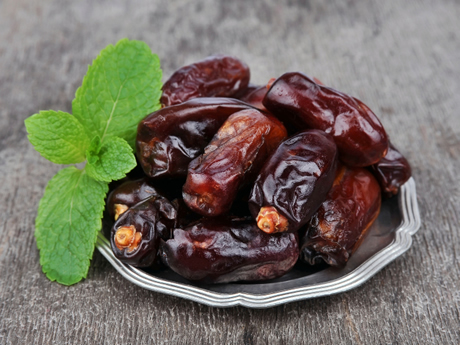
by Tanya Keam | Feb 12, 2015 | Acupuncture, Buderim, Chinese medicine, Client information, Daily Rituals, Deficiency, DIY Wellness Tips, Herbal remedies, Nourishing, Nutrition, Sunshine coast, Wellness, Womens health
Blood deficiency
Is a diagnostic term we use in Traditional Chinese medicine (TCM) for someone who is showing signs and symptoms of inadequate nourishment of the blood within the body. It is not uncommon for women to present with this type of deficiency as women lose blood in every menstrual cycle, however men can also present with it.
Many of the symptoms (below) are similar to iron deficiency anaemia, however the concept of blood in TCM refers more to the quality of the blood in its entirety to nourish the body as a whole. Whereas, anaemia in a Western term relates to deficiencies of folic acid, B12, protein building blocks and other nutrients. It may be beneficial to share with your TCM practitioner if you are aware that you are iron deficient so that dietary changes can be made.
Symptoms include :
Low energy
Blurry vision
Light headedness
Poor memory
Dry eyes, skin and hair
Pale complexion, lips, tongue colour, nails and inside the eyelid
Difficulty falling asleep
Hair loss or premature greying
Women – light or absent periods, migraines/headaches at specific times in the cycle
Tremors, numbness, tics
Weak nails
Anxiety or other mood fluctuations
To correct the deficiency
We first look at where the deficiency is coming from:
1. A diet which is lacking in the appropriate nutrients
2. Poor digestive function (the ability to absorb nutrients)
3. Excessive bleeding (often menstrual but also due to trauma or following surgery)

Nutritional support
| Grains |
Barley, corn, oats, rice, sweet rice, wheat, bran |
| Vegetables |
Alfalfa sprout, artichoke, beetroot, button mushroom, cabbage, celery, dandelion leaf, dark leafy greens, kelp, shiitake mushroom, spinach, watercress, wheatgrass |
| Fruit |
Apple, apricot, avocado, date, fig, grape, longan, mulberry |
| Beans/legumes |
Aduki, black soya, kidney, chickpea, red lentils |
| Nuts, seeds |
Almonds, black sesame |
| Fish |
Mussel, octopus, oyster, sardine, tuna |
| Meat |
All red meat especially bone marrow and liver (beef, pork, sheep). Bone broths are particular helpful |
| Dairy |
Chicken egg, |
| Herbs, spices |
Nettle, parsley |
| Oils, condiments |
Amasake, molasses |
| Beverages |
Soya milk |
| Common supplements |
Algae, pollen |

Foods especially useful
| Vegetables |
artichoke, beetroot, dandelion leaf, kelp |
| Fruit |
avocado, date, mulberry, grape |
| Nuts /seeds |
black sesame |
| Fish |
oyster |
| Meats |
beef, liver (both pork and sheep) |
| Herbs/ spices |
nettle |
| Oils/ condiments |
molasse |
Acupuncture
You may be consuming the correct foods, however if your digestive function is depleted than the nutrients are being passed through your stools instead of being transported to the cells around your body. This is where acupuncture comes in!
Acupuncture alone cannot nourish the blood, but it can greatly improve on the digestive function, like giving your body a 10-20% boost in what your digestive function should be doing, thus increasing the absorption of nutrients from food.
Cooking methods
There is also great importance on the way that foods are cooked. To support your digestive system, lightly cooking (steaming, blanching, soups, stews) and consuming warm foods is ideal. Add in some spices to aid digestion such as ginger, cumin, fennel and cardamom.
Herbs and supplements
To support your system further (on top of acupuncture treatments and dietary changes) and to nourish the blood more efficiently, a herbal formula may be developed for your individual situation. Supplements may include iron, vitamin B12, folic acid and to enhance iron absorption vitamin C (lemon juice) may be also taken with foods such as leafy greens.
Take care of you, see you in the clinic,
TK xx
Learn more > http://www.tanyakeamwellness.com
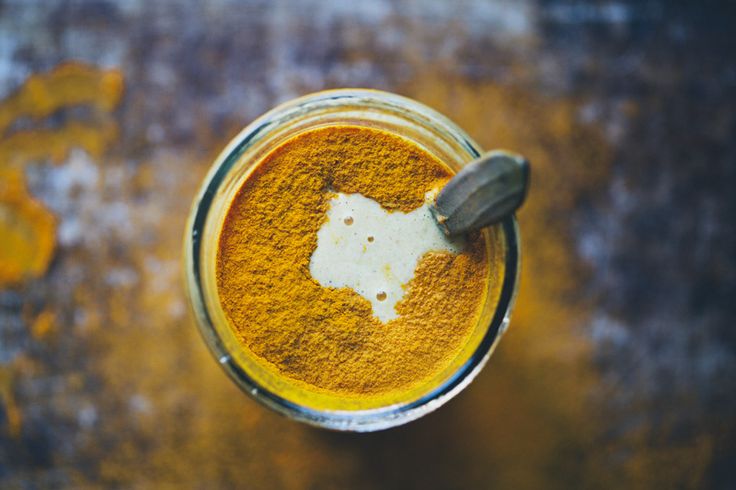
by Tanya Keam | Feb 4, 2015 | Autumn, Chinese medicine, Client information, DIY Wellness Tips, Food, Herbal remedies, Homemade, Immune Support, Immune system, Liver Health, Nourishing, Nutrition, Recipes, Seasonal living, Sunshine coast, Wellness, Winter
Immune Boosting Tumeric Lassi
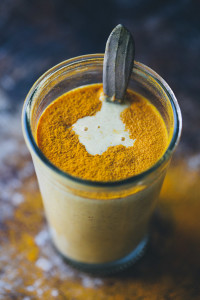
The Benefits of Tumeric
1. Otherwise known as Circuma longa, is a member of the ginger family, Zingaberaceae.
2. A wonderful aspect on the liver. Spring (and late winter) is an important time to consume herbs and foods that strengthen the liver, because spring is the season which rules the liver and gallbladder in Traditional Chinese Medicine. It is said to shrink engorged hepatic ducts, so it can be useful to treat liver conditions such as hepatitis, cirrhosis, and jaundice.
2. Highly valuable for the influence it exerts on the digestive system and the liver. In both Ayurvedic and Traditional Chinese Medicine, it is considered a digestive bitter and a carminative. It can be incorporated into foods, including rice and bean dishes, to improve digestion and reduce gas and bloating. It is a cholagogue, stimulating bile production in the liver and encouraging excretion of bile via the gallbladder. This improves the body’s ability to digest fats.
3. Recommended for chronic digestive weakness and/or congestion. It can be taken as a single extract or in the form of digestive bitters, which combine turmeric with other bitter and carminative herbs. Take either of these twenty minutes before meals, especially meals that are high in protein and/or fat. It is beneficial for people who feel tired after consuming meals or who experience gas and bloating.
4. Anti-inflammatory to the mucous membranes, which coat the throat, lungs, stomach and intestines. Turmeric decreases congestion and inflammation from stagnant mucous membranes. People with the following conditions could benefit from regular use of turmeric: IBS (Irritable Bowel Syndrome), colitis, Crohn’s disease, diarrhea, and post-giardia or post salmonella conditions. It can also reduce the itching and inflammation that accompanies hemorrhoids and anal fissures.
5. Useful to follow up antibiotic treatments, in addition to acidophilus and garlic. It helps to improve the intestinal flora and acts as an anti-bacterial.
6. Turmeric can also benefit skin conditions including: eczema, psoriasis and acne, for it is a potent detoxifier.
7. Turmeric is an antispasmodic to smooth muscles so it reduces digestive and menstrual cramping.
Try adding turmeric to your oatmeal, grains and beans, or take digestive bitters. Whatever way that turmeric is consumed it will benefit both the digestive system and the liver.
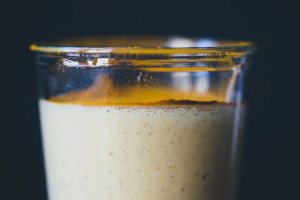
2 large or 4 small glasses
2 cups organic yogurt with active live culture, or dairy or nut milk
2 bananas
2 tsp freshly grated ginger
2 tsp honey, preferably raw (unpasteurized)
1/2 lemon, juice
2 tsp rosehip powder (optional but delicious, and a good C-vitamin boost)
1 tsp vanilla extract or ground vanilla
3-4 tsp ground turmeric (or fresh turmeric root)
Place all ingredients in a blender and mix on high speed until smooth. Add more yogurt if you prefer. Pour the lassi in two large glasses. For a more stunning presentation, dust 1 tsp ground turmeric on top before serving. Add a straw and serve.
Eat well, drink well, take care of you, see you in the clinic,
TK xx
Learn more > http://www.tanyakeamwellness.com
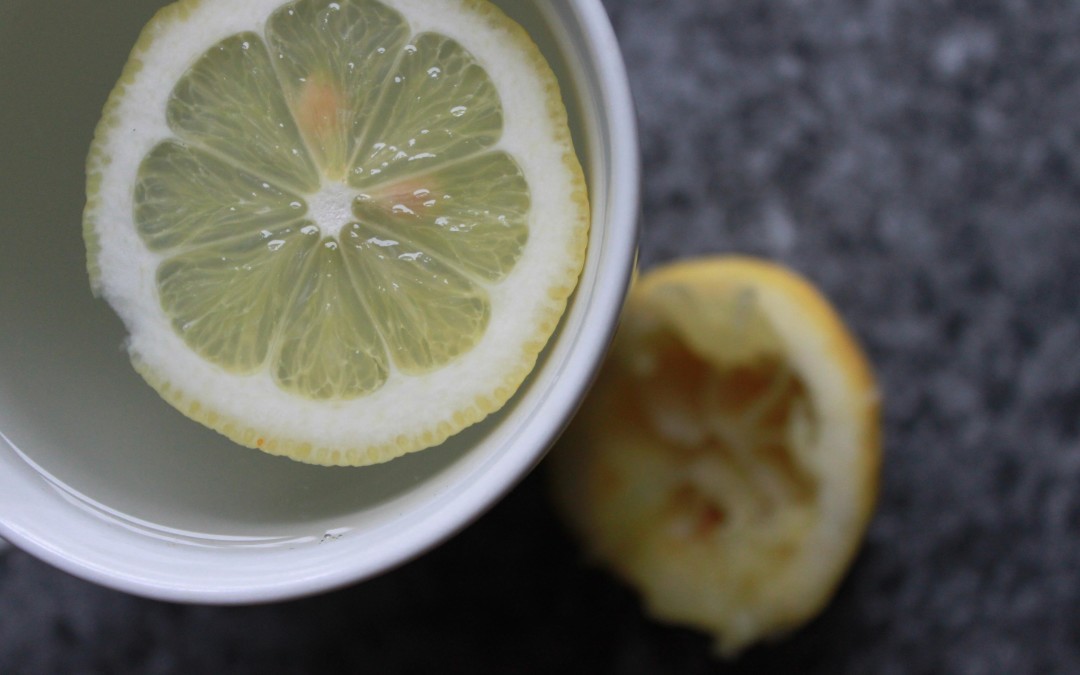
by Tanya Keam | Feb 4, 2015 | Chinese medicine, Client information, Daily Rituals, Dairy free, DIY Wellness Tips, Food, Gut flora, Herbal remedies, Homemade, Liver Health, Nourishing, Nutrition, Recipes, Seasonal living, Sunshine coast, Vegan, Vegetarian, Wellness
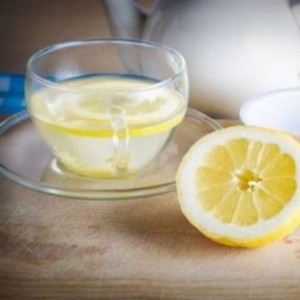
The Five Flavours in TCM
Foods are associated with certain specific properties according to their taste. The five flavours TCM recognizes are: sour, sweet, bitter, pungent and salty. These are also linked to the four natures, being temperatures: cold, cool, warm and hot. TCM uses the flavours of food to coincide with the seasons. For example: In winter we enjoy more warm – hot meals to warm us up, and in Summer we enjoy more cool – cold foods to cool us down.
It is thought that lemons originated in China (along with India, Burma and other parts of southeast Asia) so it’s no surprize that the lemon also forms a part of a healthy diet according to Traditional Chinese Medicine (or TCM).
Hot lemon water first thing in the morning is ideal for the liver to get things moving for the day ahead, both energetically, as well as to hydrate the body after 8 hours of sleep, and to stimulate bile to assist the digestive system in breaking down food.
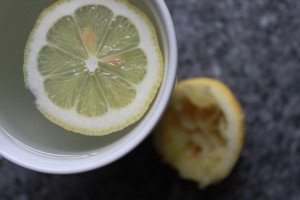
- Lemons are very beneficial for colon health due to the pectin fibres and also serves as a powerful antibacterial
- Lemon is an excellent and rich source of vitamin C, an essential nutrient that protects the body against immune system deficiencies
- It balances maintain the pH levels in the body
- Having warm lemon juice early in the morning helps flush out toxins
- It aids digestion juices and encourages the production of bile
- It is also a great source citric acid, potassium, calcium, phosphorus and magnesium
- It helps prevent the growth and multiplication of pathogenic bacteria that cause infections and diseases
- It helps reducing pain and inflammation in joints and knees as it dissolves uric acid
- It helps shift common cold symptoms
- The potassium content in lemon helps nourish brain and nerve cells
- It strengthens the liver by providing energy to the liver enzymes when they are too dilute
- It helps balance the calcium and oxygen levels in the liver In case of a heart burn, taking a glass of concentrated lemon juice can give relief
- It is of immense benefit to the skin and it prevents the formation of wrinkles and acne
- It helps maintain the health of the eyes and helps fight against eye problems
- Lemon juice helps replenish body salts especially after a strenuous workout session

Tips
Juice a whole heap of lemons in one go and freeze the juice into ice cubes so that they are ready to go each morning
Diluting the juice and brushing your teeth after drinking is advised to prevent tooth enamel decay.
Take care of you, see you in the clinic,
TK xx
Learn more > http://www.tanyakeamwellness.com
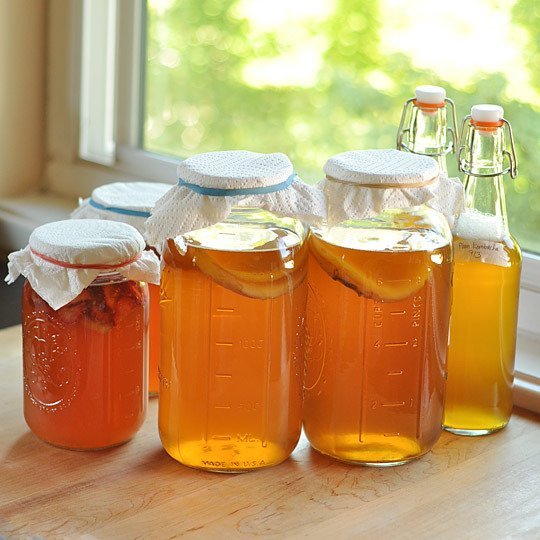
by Tanya Keam | Jan 19, 2015 | Client information, Cultures, DIY Wellness Tips, Fermented, Food, Gut flora, Kombucha, Nourishing, Nutrition, Probiotic drink, Recipes, Sunshine coast, Vegan, Vegetarian, Wellness
What Is Kombucha Tea?
The first recorded use of Kombucha was in 221 B.C. during the Chinese empire of the Tsin-Dynasty. They called it “The remedy for immortality” or the “divine tische”. It is a living health drink which has been used for thousands of years to help stimulate the metabolism and maintain a healthy immune system.
Kombucha starts out as a sugary tea, which is then fermented with the help of a scoby. “SCOBY” is actually an acronym for “symbiotic culture of bacteria and yeast.”
The scoby bacteria and yeast eat the majority of the sugar in the tea, transforming the tea into a refreshingly fizzy, slightly sour fermented (but mostly non-alcoholic) beverage that is relatively low in calories. Flavours can be added to the Kombucha such as ginger, pear or blackberries.
The SCOBY
Let’s talk about that scoby. It’s weird, right?! It floats, it’s rubbery and slightly spongy, brown stringy bits hang from it, and it transforms sugary tea into something fizzy and sour. It’s totally weird. But if you take a step back, it’s also pretty awesome.
There are a lot of theories about why the bacteria and yeast form this jelly-like layer of cellulose at the top of the kombucha. The most plausible that I’ve found is that it protects the fermenting tea from the air and helps maintain a very specific environment inside the jar that is shielded from outsiders, aka unfriendly bacteria.
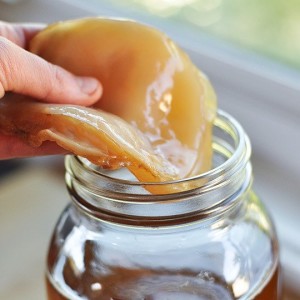
Probiotics?
Which brings us to the next question: what’s actually in kombucha? Kombucha is indisputably full of probiotics and other happy things that our intestines love and that help boost our overall health.
How to Make Kombucha Tea at Home
Makes about 4 litres
What You Need
Ingredients
4.5 cups of filtered water
1 cup white sugar or raw brown sugar – The less processing the better
8 bags black tea (or 2 tablespoons loose tea) – I prefer English Breakfast tea
2 cups starter tea from last batch of kombucha or store-bought (unpasteurized, neutral-flavoured) kombucha
1 scoby per fermentation jar
Optional flavouring extras for bottling: 1 to 2 cups chopped fruit, ginger, turmeric, lime, 2 to 3 cups fruit juice, 1 to 2 tablespoons flavoured tea (like hibiscus or Earl Grey), 1/4 cup honey, 2 to 4 tablespoons fresh herbs or spices
Equipment
Stock pot
A jar big enough to hold 4 cups of water with room spare
Bottles: Six 16-oz glass bottles with plastic lids, 6 swing-top bottles, or clean soda bottles
Small funnel
Instructions
Note: Avoid prolonged contact between the kombucha and metal both during and after brewing. This can affect the flavour of your kombucha and weaken the scoby over time.
1. Make the Tea Base: Bring the water to a boil. Remove from heat and stir in the sugar to dissolve. Drop in the tea and allow it to steep until the water has cooled. Depending on the size of your pot, this will take a few hours. You can speed up the cooling process by placing the pot in an ice bath.
2. Add the Starter Tea: Once the tea is cool, remove the tea bags or strain out the loose tea. Stir in the starter tea. (The starter tea makes the liquid acidic, which prevents unfriendly bacteria from taking up residence in the first few days of fermentation.)
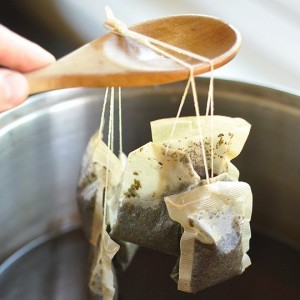
3. Transfer to Jars and Add the Scoby: Pour the mixture into your glass jar and gently slide the scoby or fermented little bits that will be floating in the bottom of a store bought kombucha, into the jar with clean hands. Cover the mouth of the jar with a few layers of cheesecloth or paper towels secured with a rubber band.
4. Ferment for 7 to 10 Days: Keep the jar at room temperature, out of direct sunlight, and where it won’t get touched or moved around. Ferment for 7 to 10 days, checking the kombucha and the scoby periodically.
It’s not unusual for the scoby to float at the top, bottom, or even sideways. A new cream-colored layer of scoby should start forming on the surface of the kombucha within a few days. It usually attaches to the old scoby, but it’s ok if they separate. You may also see brown stringy bits floating beneath the scoby, sediment collecting at the bottom, and bubbles collecting around the scoby. This is all normal and signs of healthy fermentation.
After seven days, begin tasting the kombucha daily by pouring a little out of the jar and into a cup. When it reaches a balance of sweetness and tartness that is pleasant to you, the kombucha is ready to bottle.
5. Remove the Scoby: Before proceeding, prepare and cool another pot of strong tea for your next batch of kombucha, as outlined above. With clean hands, gently lift the scoby out of the kombucha and set it on a clean plate. As you do, check it over and remove the bottom layer if the scoby is getting very thick.
6. Bottle the Finished Kombucha: Measure out your starter tea from this batch of kombucha and set it aside for the next batch. Pour the fermented kombucha (straining, if desired) into bottles using the small funnel, along with any juice, herbs, or fruit you may want to use as flavouring. Leave about a half inch of head room in each bottle. (Alternatively, infuse the kombucha with flavourings for a day or two in another jar covered with cheesecloth, strain, and then bottle. This makes a cleaner kombucha without “stuff” in it.)
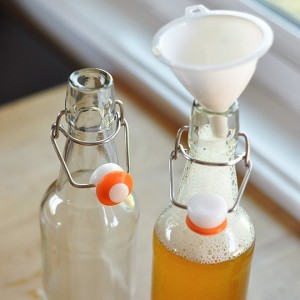
7. Carbonate and Refrigerate the Finished Kombucha: Store the bottled kombucha at room-temperature out of direct sunlight and allow 1 to 3 days for the kombucha to carbonate (the added fruit you added allows for a second fermentation process which is where it becomes carbonated). Until you get a feel for how quickly your kombucha carbonates, it’s helpful to keep it in plastic bottles; the kombucha is carbonated when the bottles feel rock solid. Refrigerate to stop fermentation and carbonation, and then consume your kombucha within a month. It is a good idea to open the bottle to let some gas/air bubbles out otherwise it will explode like a Champaign bottle!
8. Make a Fresh Batch of Kombucha: Clean the jar being used for kombucha fermentation. Combine the starter tea from your last batch of kombucha with the fresh batch of sugary tea, and pour it into the fermentation jar. Slide the scoby on top, cover, and ferment for 7 to 10 days.
Additional Notes:
• Batch Size: To increase or decrease the amount of kombucha you make, maintain the basic ratio of 1 cup of sugar, 8 bags of tea, and 2 cups starter tea per 4 cups water batch. One scoby will ferment any size batch, though larger batches may take longer.
• Putting Kombucha on Pause: If you’ll be away for 3 weeks or less, just make a fresh batch and leave it on your counter. It will likely be too vinegary to drink by the time you get back, but the scoby will be fine. For longer breaks, store the scoby in a fresh batch of the tea base with starter tea in the fridge. Change out the tea for a fresh batch every 4 to 6 weeks.
• Other Tea Options: Black tea tends to be the easiest and most reliable for the scoby to ferment into kombucha, but once your scoby is going strong, you can try branching out into other kinds. Green tea, white tea, oolong tea, or a even mix of these make especially good kombucha. Herbal teas are ok, but be sure to use at least a few bags of black tea in the mix to make sure the scoby is getting all the nutrients it needs. Avoid any teas that contain oils, like earl grey or flavored teas.
• Avoid Prolonged Contact with Metal: Using metal utensils is generally fine, but avoid fermenting or bottling the kombucha in anything that brings them into contact with metal. Metals, especially reactive metals like aluminum, can give the kombucha a metallic flavor and weaken the scoby over time.
Troubleshooting Kombucha
• It is normal for the scoby to float on the top, bottom, or sideways in the jar. It is also normal for brown strings to form below the scoby or to collect on the bottom. If your scoby develops a hole, bumps, dried patches, darker brown patches, or clear jelly-like patches, it is still fine to use. Usually these are all indicative of changes in the environment of your kitchen and not a problem with the scoby itself.
• Kombucha will start off with a neutral aroma and then smell progressively more vinegary as brewing progresses. If it starts to smell cheesy, rotten, or otherwise unpleasant, this is a sign that something has gone wrong. If you see no signs of mold on the scoby, discard the liquid and begin again with fresh tea. If you do see signs of mold, discard both the scoby and the liquid and begin again with new ingredients.
• A scoby will last a very long time, but it’s not indestructible. If the scoby becomes black, that is a sign that it has passed its lifespan. If it develops green or black mold, it is has become infected. In both of these cases, throw away the scoby and begin again.
• To prolong the life and maintain the health of your scoby, stick to the ratio of sugar, tea, starter tea, and water outlined in the recipe. You should also peel off the bottom (oldest) layer every few batches. This can be discarded, composted, used to start a new batch of kombucha, or given to a friend to start their own.
• If you’re ever in doubt about whether there is a problem with your scoby, just continue brewing batches but discard the kombucha they make. If there’s a problem, it will get worse over time and become very apparent. If it’s just a natural aspect of the scoby, then it will stay consistent from batch to batch and the kombucha is fine for drinking.
Brewing Kombucha Safely
And while the homebrewed nature of kombucha makes some home cooks nervous, is unlikely that kombucha will ever make you sick. Like all things, you need to use common sense when brewing it and pay attention to what you’re doing. It’s natural to feel nervous and unsure at first. Bottom line: if the scoby is healthy, then the kombucha will be healthy.
Is There Alcohol in Kombucha?
Kombucha does contain a little bit of alcohol as a by-product of the fermentation process. It is usually no more than 1%. Unless you drink a lot of it back to back, you won’t get drunk. But people with alcohol sensitivities should be aware of its presence.
I’m breaking the kombucha-making process into very small steps here. It looks long and complicated, but this is actually a very straightforward and streamlined process. Once you get into the rhythm of it, bottling a finished batch of kombucha and preparing the next only takes about 20 minutes every 7 to 10 days.
Where to Find Kombucha Brewing Supplies
You can use regular, store-bought tea and sugar for brewing kombucha. You can pick up a scoby from a kombucha-brewing friend or even make your own. They are available online also, however give starting your own from scratch a go!
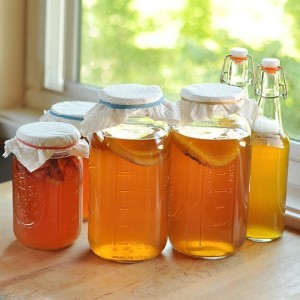
Have fun ! Take care of you, see you in the clinic,
TK xx
Learn more > http://www.tanyakeamwellness.com





























